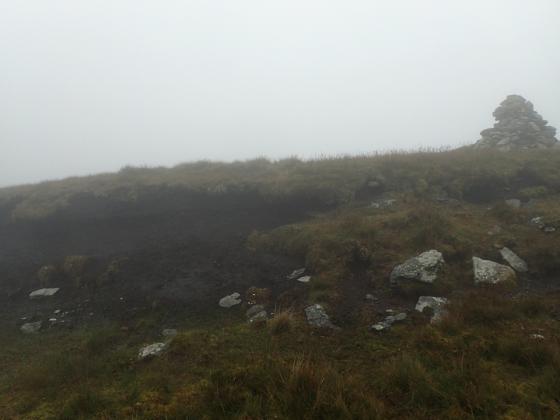
24/06/2023 – A day of tops and stones from Brae to Muckle Roe and back. We passed by The Busta Stone west of Brae, it’s a 10ft lump! A nice way to start the walk.

24/06/2023 – A day of tops and stones from Brae to Muckle Roe and back. We passed by The Busta Stone west of Brae, it’s a 10ft lump! A nice way to start the walk.

Photo taken 12th May 2014. Wonderful views from the stone looking south out across Busta Voe.

Photo taken 12th May 2014. Sunshine on Shetland (such a difference from our last visit!) Looking from the fallen stone west to the imposing bulk of Busta himself.

Photo taken on 10th May 2014. From this angle the Busta stone looked to me like a giant stone head, with a blindfold of lichen.

Photo taken 10th May 2014. The huge granite monolith of the Busta stone, looking south down the waters of Busta Voe.
Visited 10th May 2014
Heading up Mainland for Northmavine the clouds were gathering in already overcast skies, but you don’t come to Shetland for the weather, rather for its wild landscapes, wildlife and of course a rather generous selection of standing stones.
The Busta stone is one such impressive monolith, and easy to spot from the A970 just past Brae.
Turning off the main road we parked in a small layby next to a cattle grid, the other side of which was the gate allowing access to the field, empty today apart from the stone itself.
The wind was whipping at us as we approached, the bulk of the stone looming high above us, and providing a seemingly warming embrace, as we huddled in its lea out of the wind. The stone is huge, it’s difficult to get an idea of its scale until you stand next to it, the ever present shrubby lichen masking its top half.
This is a great location for a standing stone, looking out over the waters of Busta Voe, and one face of the stone does indeed seem to take on the aspect of a head rising from the ground, the lichen like a blindfold over its eyes. Canmore mentions a possible second stone, now fallen, to the east, and whilst I did notice a smaller stone nearby protruding from the ground, I didn’t really think to check it out, thinking it probably natural.
The huge granite lump of the stone seems somehow smaller as we walk away, swallowed in the wild landscapes of Shetland, but it’s certainly one of the more accessible menhirs here, and a must visit in these far flung northern parts.
Later on returning from the hinterlands of Northmavine we pass the stone again as we follow in Carl’s footsteps and call in for some chips at Frankie’s, and have no hesitation in recommending both the chippie and the stone!
Visited 11.6.12
After enjoying a rather nice fish supper in Frankie’s (the most northern chippie in Britain) there was just time to go and have a look at the Busta Stone.
This is a very large prominent stone which can be seen from a distance.
We parked next to the field in which the stone resides and a quick hop over the metal field gate and I was up close and personal. The field was full of sheep with lambs who didn’t seem too pleased to see me there as they were using it as a rubbing post!
This is an attractive stone – looks like it has white ‘pebble dash’ with black speckles.
It is also covered in that light green ‘hairy’ lichen I have seen so much of over the last two weeks.
There are great views over the loch and down the valley.
‘what a highlight, this stone is absolutely enormous. roughly 5’ by 6’ square and 10’ tall. balanced by a pile of small rocks at its base. broad and oddly shaped; gargantuan compared with the other stones in this area. it seems not to fit in with those other themes going on on this island [except for the standing stone at Yamna Field, Gluss].
overlooking Busta Voe, the town of Brae, out toward the open sea (which you can’t see), looking upon so many peaks.
a smaller pyramidal stone, a couple of feet tall, just downhill from it‘
-12 March 2002
Not far from the house of Busta, is a large stone of granite, that appears as erect as if it had been fixed there by art. Not improbably it was a large boulder-stone, brought thither by natural causes, and placed in an upright position, as the memorial of some battle or death of a chief. It is supposed by the vulgar to have been thrown there by the Devil from some hill in Northmavine.
From ‘A description of the Shetland Islands‘ by Samuel Hibbert (1822).
This stone was thrown by the giant of Papa Stour at the giant of Mavis Grind. It weighs about 20 tons.
(from Grinsell’s folklore of prehistoric sites)
















